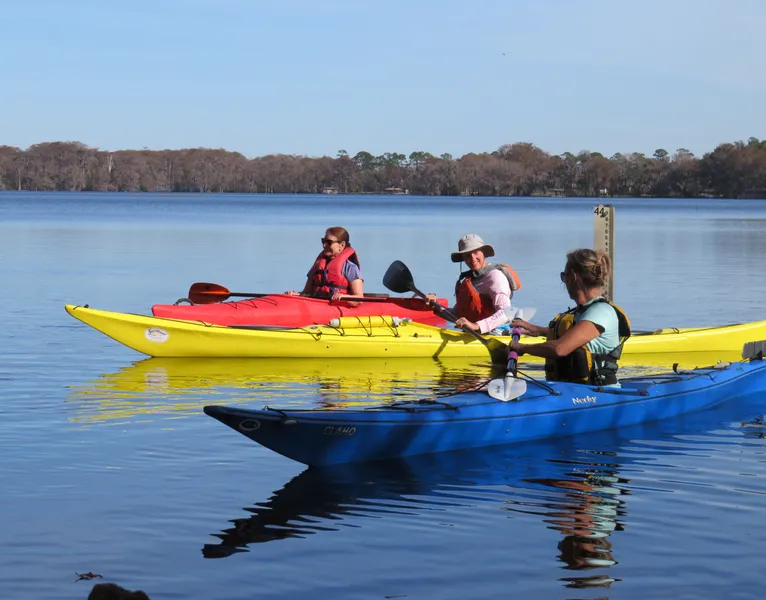Kayak Safety Assessments: Evaluating Risks Before Setting Out

Kayaking is a thrilling outdoor activity enjoyed by many, but it’s essential to prioritize safety before embarking on any adventure. In this comprehensive guide, we’ll delve into the crucial aspect of kayak safety assessments and why evaluating risks before setting out is paramount. With the increasing popularity of kayaking, understanding and implementing proper safety measures becomes even more crucial.
Understanding Kayak Safety
Kayak safety assessments involve a systematic evaluation of potential risks associated with kayaking trips. While kayaking offers unparalleled experiences in nature, it’s not without its dangers. Understanding kayak safety involves recognizing and mitigating these risks to ensure a safe and enjoyable experience on the water.
Factors contributing to kayak accidents include adverse weather conditions, challenging water conditions, inadequate preparation, and lack of experience. According to the U.S. Coast Guard, capsizing and falls overboard are among the leading causes of kayak-related fatalities. Therefore, thorough safety assessments are essential to minimize these risks and prevent accidents.
Factors to Consider in Safety Assessments
Weather Conditions
Weather can significantly impact kayaking trips, affecting factors such as visibility, wind speed, and temperature. Before setting out, check weather forecasts from reliable sources and pay attention to any advisories or warnings. Avoid kayaking in severe weather conditions, such as thunderstorms or high winds, as they can pose significant risks.
Water Conditions
Assessing water conditions is crucial for safe kayaking. Factors such as currents, tides, and waves can vary depending on the location and time of day. Consult tide charts and nautical maps to understand the water dynamics of your chosen route. Additionally, be mindful of potential hazards such as rocks, submerged objects, and strong currents.
Location
The characteristics of the water body you’ll be kayaking in play a significant role in safety assessments. Coastal waters, rivers, lakes, and streams each present unique challenges and considerations. Research your chosen location thoroughly, including any regulations, entry points, and known hazards.
Skill Level
Matching the difficulty of the route with your kayaking abilities is essential for safety. Beginners should start with calm, sheltered waters and gradually progress to more challenging environments as their skills and confidence improve. Be honest about your capabilities and avoid pushing beyond your limits, especially in unfamiliar or hazardous conditions.
Preparing for a Safety Assessment
Before conducting a safety assessment, ensure you have the necessary gear and skills to handle potential risks.
Essential Gear
Personal Flotation Device (PFD): A properly fitted PFD is essential for all kayakers, providing buoyancy and potentially life-saving flotation in case of an emergency.
Safety Whistle: A loud whistle can help attract attention in an emergency situation.
Kayak Bilge Pump: Useful for removing water from the kayak in case of capsizing or flooding.
Navigation Tools: Carry maps, compass, or GPS device to aid in navigation and route planning.
First Aid Kit: Be prepared to handle minor injuries and medical emergencies.
Communication Device: Carry a waterproof cell phone or VHF radio for communication with emergency services or fellow kayakers.
Personal Preparation
Physical fitness and basic kayaking skills are essential for safe paddling. Practice proper paddling techniques, including forward strokes, turning, and bracing. Additionally, consider taking a kayaking course or seeking guidance from experienced paddlers to improve your skills and confidence on the water.
Emergency Planning
Develop a comprehensive safety plan before setting out on a kayaking trip. Share your itinerary with a trusted friend or family member, including details such as your intended route, expected return time, and emergency contacts. Familiarize yourself with local emergency resources, including nearby hospitals, Coast Guard stations, and marine rescue services.
Conducting a Safety Assessment
Now that you’re equipped with the necessary gear and preparation, let’s delve into the practical steps of conducting a safety assessment before setting out on your kayaking adventure.
Researching the Route
Start by researching your intended kayaking route thoroughly. Gather information from reliable sources such as marine charts, guidebooks, and online resources. Look for details on water conditions, potential hazards, navigational markers, and points of interest along the route.
Using Resources
Utilize available resources to aid in your safety assessment. Consult local paddling clubs, outfitters, or experienced kayakers for insights and recommendations about the area you’ll be kayaking in. Additionally, consider joining online forums or social media groups dedicated to kayaking to connect with fellow paddlers and gather valuable insights.
Identifying Potential Risks
As you gather information about your route, pay close attention to potential risks and hazards. Factors such as strong currents, underwater obstacles, changing weather conditions, and boat traffic can pose significant risks to kayakers. Evaluate these risks based on your skill level, experience, and the capabilities of your equipment.
Risk Mitigation Strategies
Once you’ve identified potential risks, it’s essential to implement strategies to mitigate them and ensure a safe kayaking experience.
Avoidance
The best way to mitigate risks is often to avoid them altogether. If conditions are unfavorable or hazards are present along your intended route, consider postponing your trip or choosing an alternative location. It’s better to err on the side of caution than to put yourself in harm’s way.
Preparation
Proper preparation is key to handling potential risks effectively. Ensure you have the necessary skills and equipment to navigate challenging conditions and respond to emergencies. Practice self-rescue techniques such as re-entering your kayak after capsizing and performing assisted rescues with a partner.
Contingency Planning
Despite thorough preparation, unexpected situations can still arise on the water. Develop contingency plans for common scenarios such as capsizing, getting lost, or encountering severe weather. Communicate these plans with your kayaking partners and be prepared to adapt and improvise as needed.
Practical Tips for Safe Kayaking
In addition to conducting safety assessments and implementing risk mitigation strategies, here are some practical tips to enhance your safety while kayaking:
Stay Informed
Regularly check weather forecasts and water conditions before and during your kayaking trip. Be aware of changing conditions that may impact your safety and adjust your plans accordingly.
Start Small
If you’re new to kayaking or exploring unfamiliar waters, start with shorter trips in calm, sheltered environments. Gradually increase the difficulty and duration of your outings as your skills and confidence grow.
Buddy System
Whenever possible, kayak with a partner or in a group. Not only does this provide added safety in case of emergencies, but it also enhances the enjoyment of your kayaking experience through shared experiences and camaraderie.
Communication
Establish clear communication channels with your kayaking partners, especially in challenging or remote environments. Agree on signals and protocols for staying in touch and coordinating group movements on the water.
Case Studies and Examples
To illustrate the importance of safety assessments in kayaking, let’s examine a couple of real-life scenarios where thorough preparation and risk mitigation strategies played a crucial role in ensuring a safe outcome.
Navigating Strong Currents
In this scenario, a group of kayakers planned a trip along a river known for its strong currents. By conducting a thorough safety assessment and recognizing the potential risks, they equipped themselves with appropriate gear, including safety helmets and whitewater kayaks. During the trip, they encountered challenging rapids but successfully navigated them using proper techniques and teamwork, resulting in a safe and memorable experience.
Adapting to Changing Weather
In another scenario, a solo kayaker set out on a coastal paddling trip with clear weather forecasts. However, halfway through the journey, the weather unexpectedly deteriorated, with strong winds and heavy rain. Thanks to the kayaker’s preparedness and contingency planning, they quickly found shelter and waited out the storm before safely completing their trip.
Conclusion
Kayaking offers unparalleled opportunities for adventure and exploration, but it’s essential to prioritize safety at all times. By conducting thorough safety assessments, implementing risk mitigation strategies, and following practical tips for safe kayaking, you can enjoy the beauty of nature while minimizing potential risks. Remember, the key to a successful kayaking trip is proper preparation and vigilance. So, before you set out on your next kayaking adventure, take the time to assess the risks and ensure a safe and enjoyable experience on the water.




